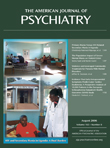Nise Magalhães da Silveira (1905–1999)
In the 1940s, the treatment of schizophrenia was revolutionized by the Brazilian psychiatrist Dr. Nise Magalhães da Silveira. Disagreeing with the current methods of treatment, she searched for new therapeutic approaches in the treatment of mentally ill patients.

The nonverbal language of plastic arts would make it possible for patients to express themselves and organize their subjective world (1) . Dr. da Silveira started painting and modeling classes for patients with schizophrenia in the National Psychiatric Centre, Rio de Janeiro, from 1944 to 1975.
Dr. da Silveira and her Museum of Images of the Unconscious are of fundamental importance in the history of psychiatry in Brazil. Individuals with schizophrenia, a group marginalized by society as well as by psychiatric institutions prior to the museum’s founding, were finally able to find space and affection to express their deep emotions. Dr. da Silveira’s work calls attention to Carl Jung, who discussed mandalas—symbols of the search for the center, psychic self-healing potential that emerges in schizophrenia—as compensation for schizophrenic dissociation.
The study of these works makes possible the detailed supervision of an individual’s psychic processes, from perceptions of the social-familiar to the depths of the unconscious, where the language of images predominates as a form of expression (2 , 3) .
Transformations in psychiatric services through workshops with expressive activities are closer in practice to Dr. da Silveira’s assertion that “a painting class can be a space of freedom to express yourself and to relate actively to someone who accepts you, and try to understand you in your peculiar form of language” (4) .
1. Gullar F: Nise da Silveira. Rio de Janeiro, Relume-Dumará, 1996Google Scholar
2. Mello LC: Flores do Abismó. Catálogo da Mostra do Redescobrimento, 2000Google Scholar
3. Silveira N: Imagens do Inconsciente (4th ed.). Brasília, Alhambra, 1981Google Scholar
4. Silveira N: O mundo das Imagens. São Paulo, Ática, 1992Google Scholar



